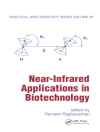Several ceramic parts have already proven their suitability for serial application in automobile engines in very impressive ways, especially in Japan, the USA and in Germany. However, there is still a lack of economical quality assurance concepts. Recently, a new generation of ceramic components, for the use in energy, transportation and environment systems, has been developed. The efforts are more and more system oriented in this field. The only possibility to manage this complex issue in the future will be interdisciplinary cooperation. Chemists, physicists, material scientists, process engineers, mechanical engineers and engine manufacturers will have to cooperate in a more intensive way than ever before. The R&D activities are still concentrating on gas turbines and reciprocating engines, but also on brakes, bearings, fuel cells, batteries, filters, membranes, sensors and actuators as well as on shaping and cutting tools for low expense machining of ceramic components.
This book summarizes the scientific papers of the 7th International Symposium ‘Ceramic Materials and Components for Engines’. Some of the most fascinating new applications of ceramic meterials in energy, transportation and environment systems are presented. The proceedings shall lead to new ideas for interdisciplinary activities in the future.
قائمة المحتويات
New Materials for Automotive Applications
Manufacturing Technologies
Material Testing and Physical Properties
Fatigue and Lifetime Assessment
Composites and Surface Technologies
عن المؤلف
Jürgen G. Heinrich is affiliated with Journal of Ceramic Science and Technology, International Ceramic Federation, University of Clausthal Technical, Ceramtec Gmb H, Deutsches Zentrum für Luft- und Raumfahrt e.V., Nabaltec AG, European Ceramic Society, German Ceramics Society.
Fritz Aldinger is the former Director of the Powder Metallurgic Laboratory at the Max Planck Institute for Metal Research and of the Institute for Nonmetallic Inorganic Materials (INAM), both in Stuttgart, Germany. He has published 600 scientific contributions in professional journals and books since 1995. He carried out research at the MPI and paid a visit to the Franklin Institute Philadelphia, USA, in 1970. From 1978 to 1992, he held several positions in industry, most notably at W. C. Heraeus Gmb H in Hanau and Hoechst AG in Frankfurt, where he led Central Research with some 900 employees.His main fields of interest is microstructure design based upon powder technologies and powder-free technologies including biomineralisation.












